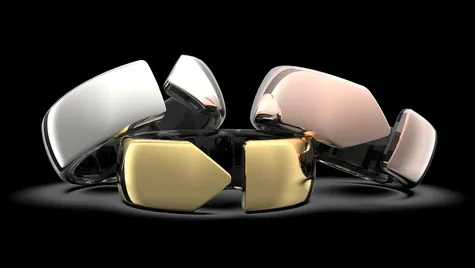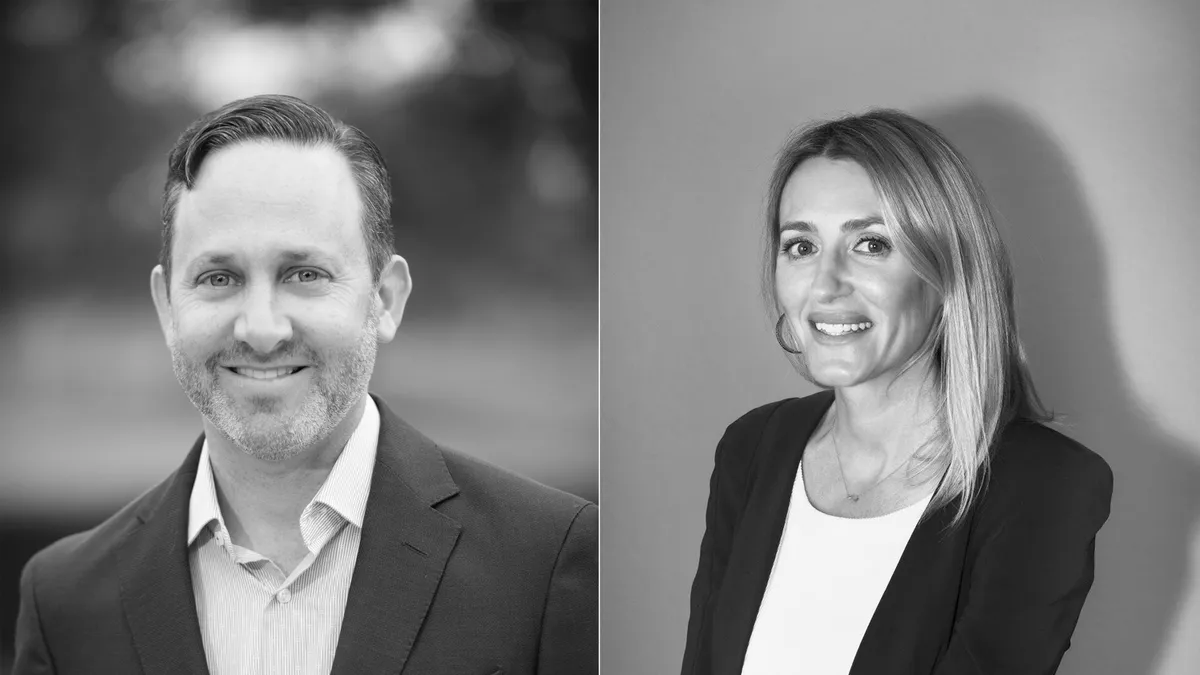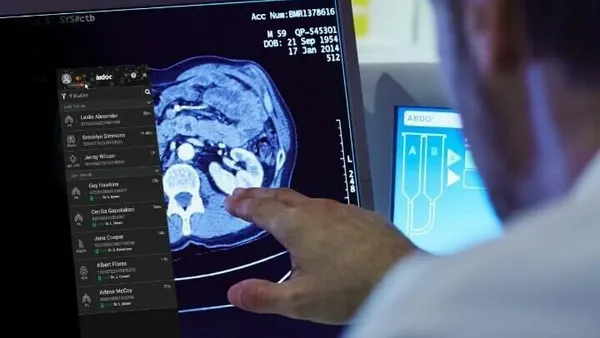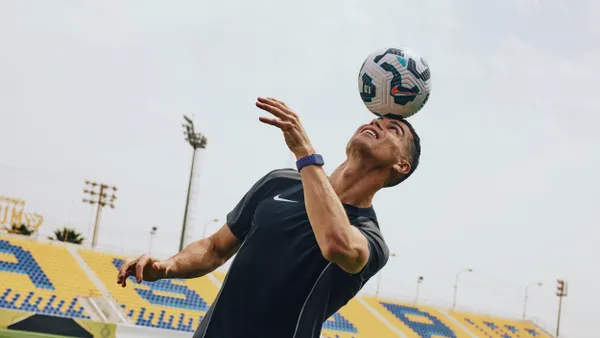With a sleek, polished-aluminum design, Movano Health’s smart ring would make a fashionable addition to any jewelry box. But the female-focused ring is meant to be worn continuously, to track heart rate, blood oxygen saturation, menstrual symptoms, sleep patterns and more. The Pleasanton, Calif.-based company, which went public in March 2021, is working toward filing FDA submissions for the ring’s heart rate and oxygen data, and it is developing a radio frequency-enabled sensor for blood pressure and glucose monitoring.
Movano founder and Chief Technology Officer Michael Leabman, an MIT-trained entrepreneur who holds more than 200 patents, and Vice President of Strategy Stacy Salvi, the former head of strategic partnerships for Fitbit, talked to MedTech Dive this week as they get ready to launch the Evie ring in the consumer market.
This interview has been edited and condensed for ease of reading.
MEDTECH DIVE: What will set your device apart from other wearables on the market?
SALVI: The ring we will be launching with over the summer is called the Evie ring. The form factor looks different than what else you see on the market. It is an open design so it is slightly flexible, which means that it goes over the knuckle easily and accommodates for swelling that we might have over the course of a day or over a month, because we want to make sure it stays comfortable for the duration, so she wants to wear it all the time. But of course the most important factor is that we are building this to be a medical device, which means we're building it in an FDA-cleared facility. And we will be seeking FDA clearance on some of the key metrics, like blood oxygen and heart rate, to start. We spoke to so many different people about what they were looking for in a wearable. What they told us was that they're looking for more balance, to find more energy and get better sleep. So we're going to be focused on those areas, rather than the optimization of fitness performance, which is a lot of what you see in the market today.
We are planning on rolling out direct to consumer first on our website, Eviering.com. It will be below $300, and there will not be a subscription fee associated with the purchase of the ring.

What is the timeline for your FDA applications and research studies?
LEABMAN: We're in the process, in the next couple of months, of submitting for FDA clearance on both blood oxygen and heart rate. Those will be the first two things that are FDA cleared, hopefully in time for the Evie launch, or shortly after the launch. We've already done the studies, we already have the data, and we already know we meet the accuracy. It's just a matter of getting all the paperwork filed. Now blood pressure, and glucose, obviously, is a much more difficult task. We spent the last four years developing multiple ICs [integrated circuits], combining those ICs into a single tiny chip that can fit into a ring or wearable. We're in the process of doing a lot of testing in house, and then we will do external blood pressure and glucose testing, like we've done in the past on our multiple chips, very soon now.
How are you addressing the challenge of accuracy, particularly in glucose monitoring?
LEABMAN: The accuracy has gotten better and better, as we've taken multiple chips and shrunk them down to a single four- by six-millimeter chip. If you've looked at the market, it is the Holy Grail. People who have tried to do this in the past have always tried to do it with optical. Certainly Apple has worked on it with optical for the last 10 years, and a lot of others have tried to use optical, and the problem with light-based technology is freckles, skin type, thickness, all really influence how far light can penetrate. And so using RF [radio frequency], and in our case, millimeter wave, we essentially avoid all these problems that have traditionally plagued people trying to solve this problem. So it's a very, very different approach, and that's why we feel very confident. Based on our testing so far, it's getting more and more accurate, and we'll continue to evolve the algorithm as we do our clinical studies over the next couple months.
Are there some lessons learned from your IPO?
LEABMAN: This is my second company I've been involved with that’s gone public this route, a little early in the timeline. Most companies wait till they have $100 million in revenue to go public. We did it a little early, within a year and a half or two years of launching. I think we're more akin to a lot of biotech companies, which traditionally have to raise a lot of money to go through their FDA process. We wanted to make sure we're capitalized with enough money to get through that entire process with blood pressure and glucose. It's an expensive endeavor. So we had the opportunity to go public early, and we decided that that was best for us in order to give ourselves the time to get the technology right. It has its pluses and minuses. Certainly we raised the money that we needed to raise for two to three years. It's always tough being in the public eye as you're an R&D company. I think with Evie scheduled to launch this summer, we now feel good about going public when we did. But yeah, it's hard having to disclose everything when you're still a startup and trying to innovate.
How did you decide to focus on women’s health?
SALVI: When we were initially examining the need state in healthcare, across the board one thing that we discovered was that despite the fact that women make the majority of the health decisions for themselves and their families, they feel either dismissed or under-prepared for the inevitable life stages that they're going to experience. They also control or influence about 85% of consumer spending. So we thought that focusing on women allowed us to prioritize the features for them that haven't been addressed as meaningfully as we would like, and as the users would like. When we have conversations with people, the resounding feedback that we get is, it's about time. So we're excited about getting the opportunity to focus on women first.
Is there a ring for men in your pipeline?
SALVI: As far as future iterations, there's nothing stopping us from making a device for everyone. So keep an eye out for that, although there’s nothing formally announced right now.












